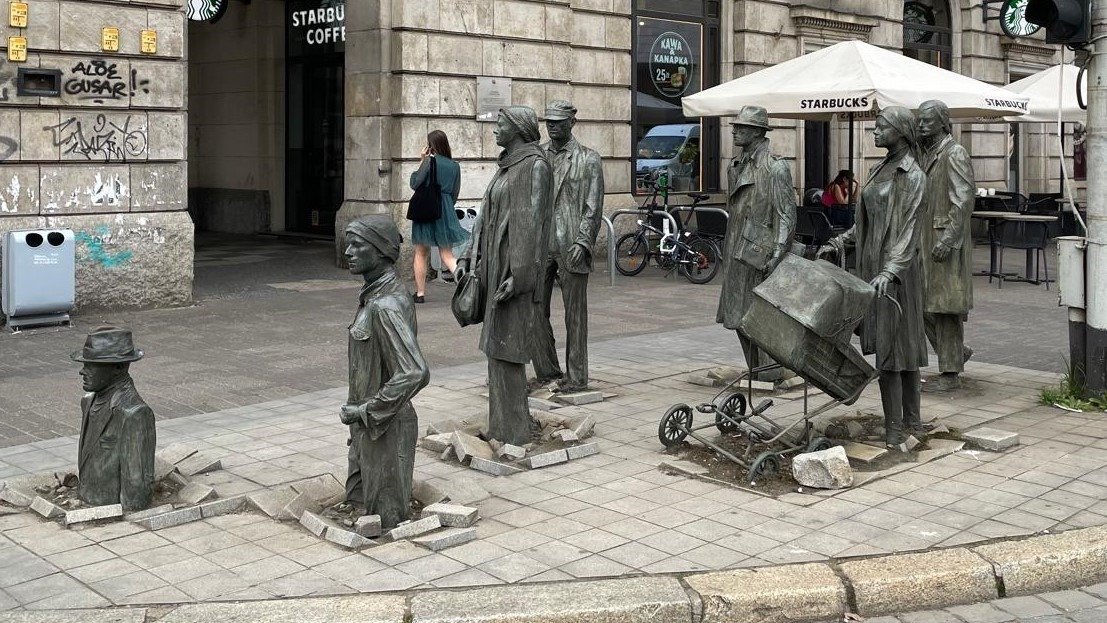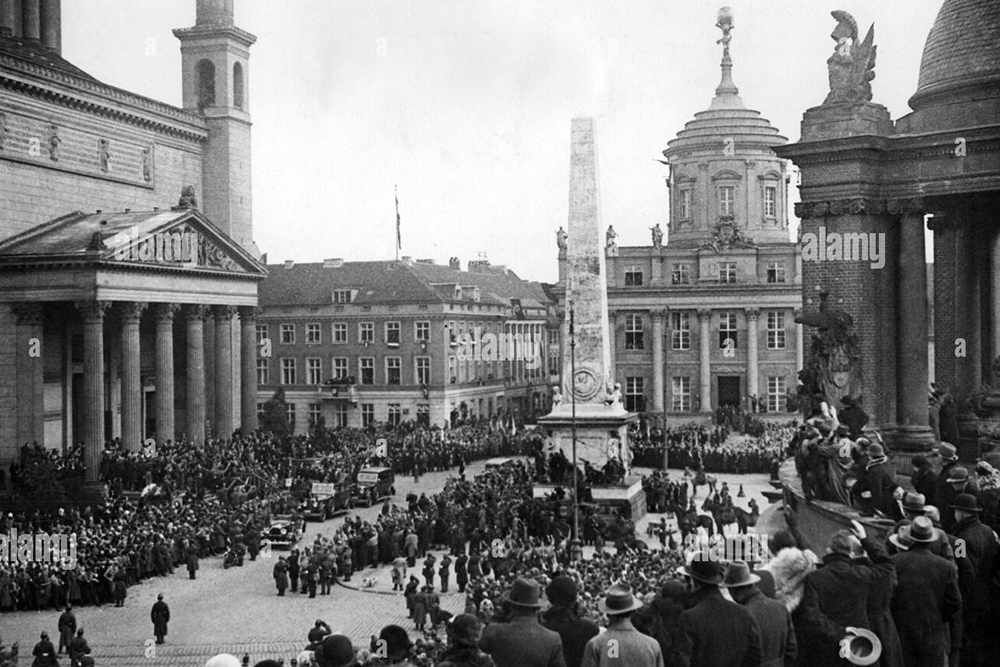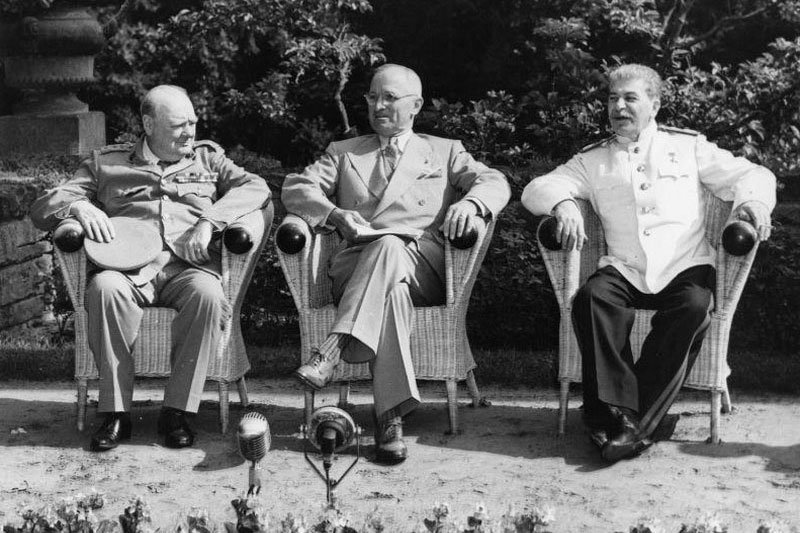
5 historical events that occurred in Potsdam that you did not know We have already told you a little about the history of Potsdam, in fact there are about 30 palaces or mansions here and that make the city receive the nickname of “Versailles of the North” . We have also told you about several films that have surprisingly been shot in this city, in the Babelsberg film studios, which is why the city is also called “Hollywood of Europe” and we have also recently told you about the events that occurred in the Glieniecker Bridge, hence the name “City of Spies”. However, beyond nicknames and surprising events, we want to tell you about and bring you closer to 5 historical moments that mark the history of Potsdam, Europe and the world.
October 29, 1685

As a response to the Edict of Fontainebleau, of October 18, 1685, in which the French King Louis XIV forced Protestants (mainly Huguenots) to convert to Catholicism (for which it is estimated that between 140,000 and 200,000 Protestants left France during the following two decades), the Great Elector Frederick William I of Prussia issued the Edict of Potsdam on October 29, 1685, by which he offered French Protestants safe conduct to reach Brandenburg-Prussia, tax immunity for ten years, an arbitrator for their communities and the authorization to practice their religion in their mother tongue, according to the liturgy of the reformed churches of France.
Attracted by these benefits, Huguenot communities from France, the region of Bohemia, and Russia settled in the city of Potsdam, which greatly contributed to the development of the local economy after the wars of religion (“the 30 Years’ War”). ”) that had plagued Europe during the 17th century. However, despite the advantages of the sanction of this Edict, the migrant communities did not arrive in large numbers in the city, given its distance and cultural and linguistic contrast with France, hence the city’s Huguenot community has not overcome the 1,000 people (while in Berlin about 20,000).
In Potsdam, we find a palpable trace of this community with the French Church (Französische Kirche), built in 1752 next to the Bassinplatz, which today and after the bombing of the city in April 1945, transform this building as the oldest in the historic center of the city.
March 21, 1933

This day alludes to the famous ceremony by which the President of the Reich (Reichspräsident) Paul von Hindenburg formalizes the Chancellor (Reichskanzler) Adolf Hitler, after the National Socialist Party obtained the majority of seats in the March elections. the Reichstag (German Parliament).
The Ministry of Propaganda especially chose this city and place, since in the Garrison Church (Garnisonkirche) rested the remains of King Frederick II “The Great”, the most important governor of the Prussian Kingdom and, in addition, the date was chosen because it represented the first day of operation of the German Reichstag on March 21, 1871, with the entry into power of Otto von Bismarck.
This day was not only celebrated in Potsdam but also extended to Berlin and culminated in acts of the city’s opera.
This place was bombed in April 1945 and then completely demolished in 1968 with the installation of the communist government (the German Democratic Republic: GDR). To date there is a wide debate in the city about its reconstruction, so today we can visit its ruins and the permanent documentation center that tells this story.
January 20, 1942

Although this place is not actually in Potsdam, but rather on the border between Berlin and Potsdam, we can easily find it on the way between the first and second cities at the Wannsee train station and S-Bahn.
Here the Nazi high command met on the night of January 20, 1942 in order to discuss the “final solution to the Jewish question”, for which the Ministries of Foreign Affairs, Interior, and Propaganda, among others, decided on the future of the people of Jewish origin who still remained in Nazi-occupied territories in Europe, this is where the unfortunate plan of deportation to the Polish territories begins to be carried out in order to later assassinate these people in the detention and extermination camps.
On the occasion of the 50th anniversary of these events, from January 20, 1992, it became a Holocaust documentation center known as the “House of the Wannsee Conference” (Haus der Wannsee-Konferenz) with permanent exhibitions. about the topic.
August 8, 1945

Between July and August 1945, this conference or meeting was held between the delegations of the allied bloc (United States, United Kingdom, and Russia) that ended on August 8, with the famous image -that we see above- between the leaders of these countries: (from left to right) Churchill, Truman, and Stalin.
This meeting was framed within another series of meetings that had already begun to take place (since 1942 and that followed the Crimea Conference: Yalta in February 1945) with the aim of deciding on the future of the war, especially after that it had ended in Europe.
At first, this conference in which Stalin acted as host (which at this time traveled only by land and therefore places close to Moscow were chosen) would be held in Berlin, but the level of destruction of the city was such that it did not count. with facilities and a level of security adequate to receive visiting delegations and mainly their leaders, that is why the Cecilienhof Palace on the outskirts of Potsdam (the last palace built by the ruling Hohenzollern family in 1914) was chosen to host this conference, as it had withstood the April 1945 bombardment of the city in very good condition.
In this conference it was decided on the 4D plan (demilitarization, denazification, democratization, and decommodification) that would begin to be carried out in the rest of the world, it was also decided on the division of Germany and Berlin in particular, which would be administered between the allied countries, the same fate befell Austria and Vienna in particular. It was also decided on the return of the Polish territories annexed by Nazi Germany, which remain the current border between Germany and Poland, and a series of events that begin to shape the world and especially “The Cold War”, in which this meeting marks an important milestone in its beginning.
The Cecilienhof Palace can be visited daily, 2021 it has had an exhibition commemorating the 75th anniversary of this conference (which was to be held in 2020, but due to the Covid pandemic it had to be postponed for the year next) and shows the different installations occupied by the allied countries.
February 10, 1962

In 1957 and after a long investigation, the FBI managed to capture the Soviet spy residing in New York, Rudolf Abel (real born as Vílyam Guénrijovich Fisher), who was later sentenced to 30 years in prison.
Despite his long sentence, the US government began negotiations with the Soviet Union to carry out a prisoner exchange between this spy and two US citizens sentenced in Moscow (an Air Force pilot and an American student imprisoned in East Berlin) who It was held on February 10, 1962. The chosen place was the Glienicker Bridge since it represented a natural border (across the River Havel) between the Federal Republic of Germany (a satellite government of the United States) and the German Democratic Republic (Government of the United States). satellite of the Soviet Union) and, in addition, it was far from the public eye that represented the center of Berlin (and in particular the entire border of the Berlin Wall), so these prisoners were transferred to Berlin and Potsdam. Given the success of the result of this action, another 3 exchanges of spies were carried out, and hence this bridge is known as the “Bridge of Spies” to this day.
Then you will wonder why the image above: Steven Spielberg’s successful film “The Bridge of Spies” portrays the story of Rudolf Abel and was completely shot between Berlin and Potsdam and represented an event for which the Chancellor of back then, Angela Merkel, visited his set, right on the Glienicker Bridge. You can discover more of this story in our post on “The City of Spies”.
As you can see, Potsdam is a city with a unique and very long history, many events unknown to us, but of vital importance for current history, have occurred here and other more recognizable events have also happened here: pure history! If you want to have a unique experience and discover everything about the city of Potsdam, do not hesitate to take one of our Free Walking Tours with us, we are waiting for you!

This is the second part of our article 20 fun facts about Germany (Part One).
In this article we tell you some of the most interesting facts about Christmas in Germany. Ready?
In this post we tell you about the best German music, different rhythms and it comes with a playlist included!